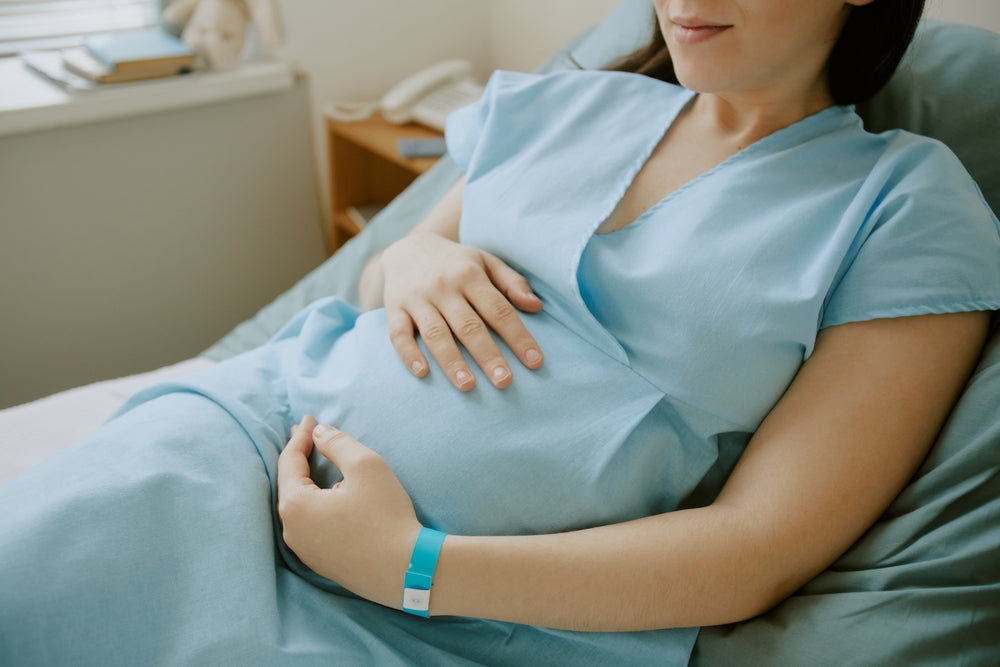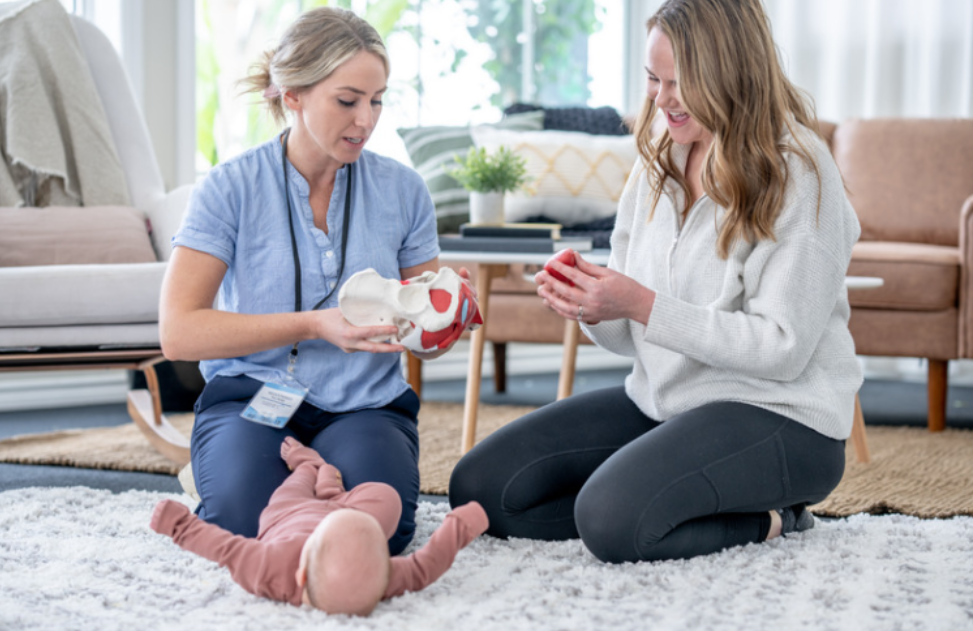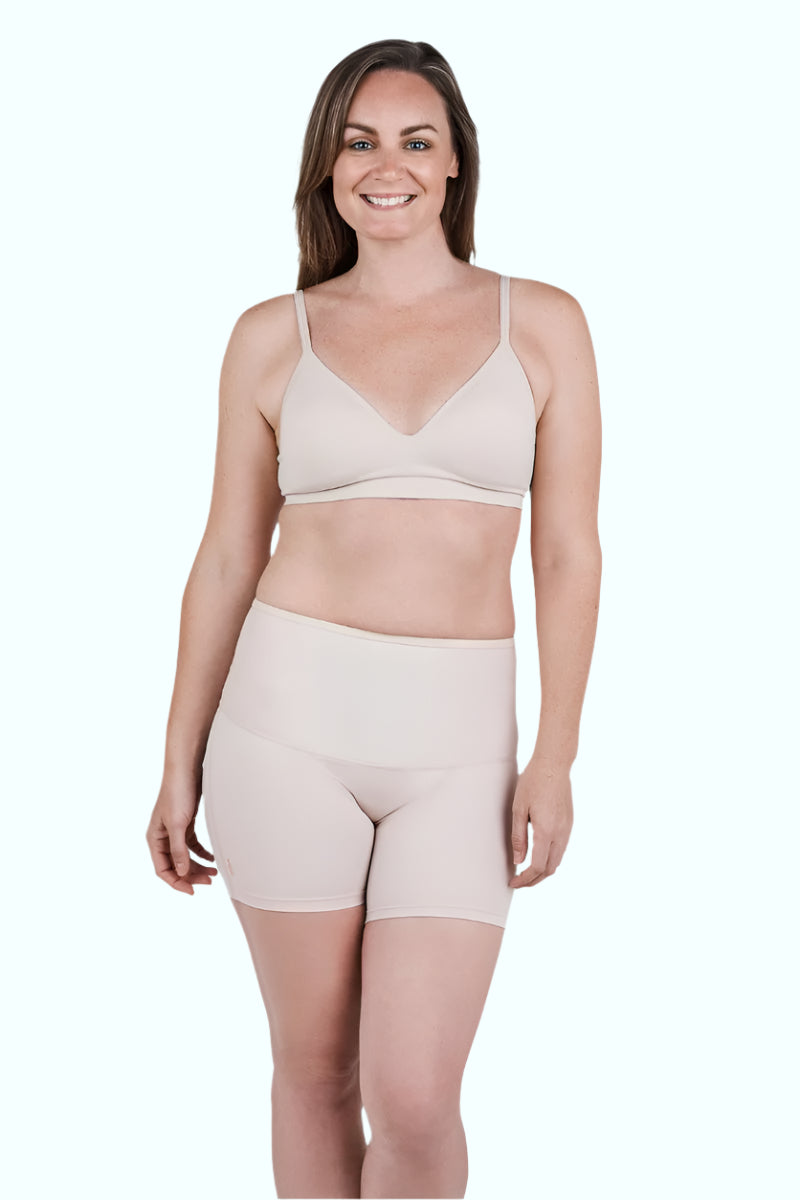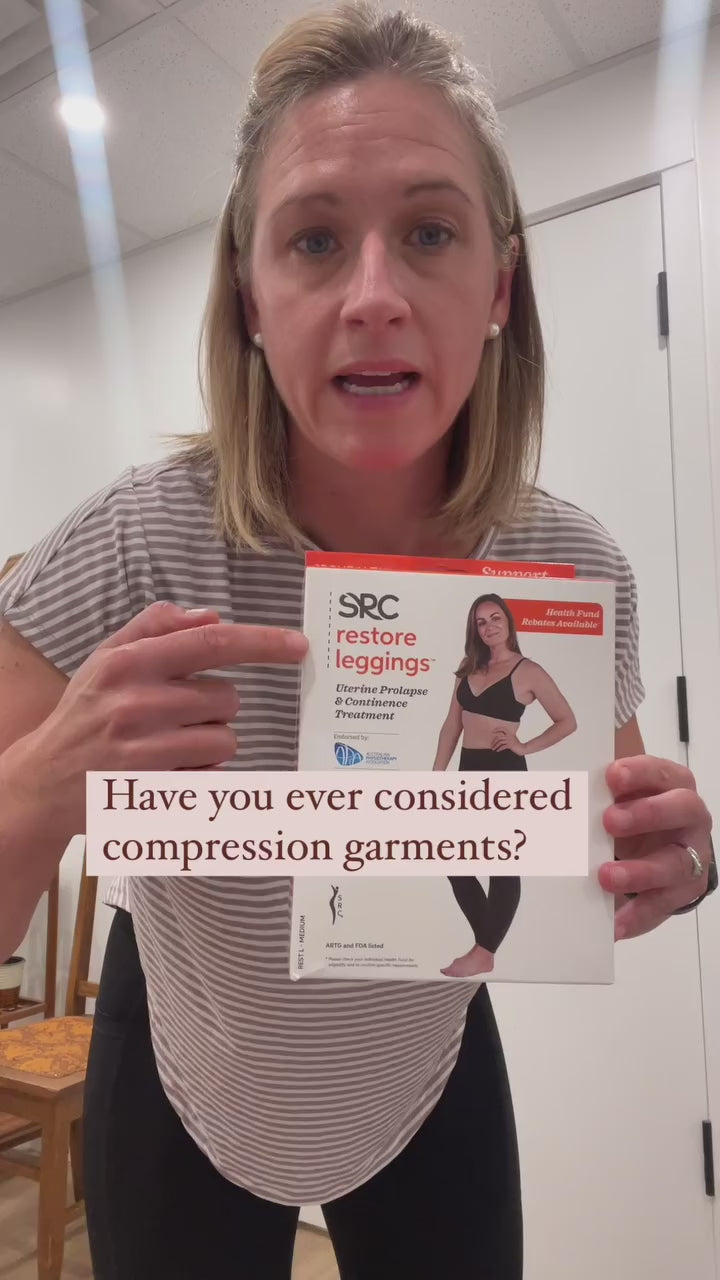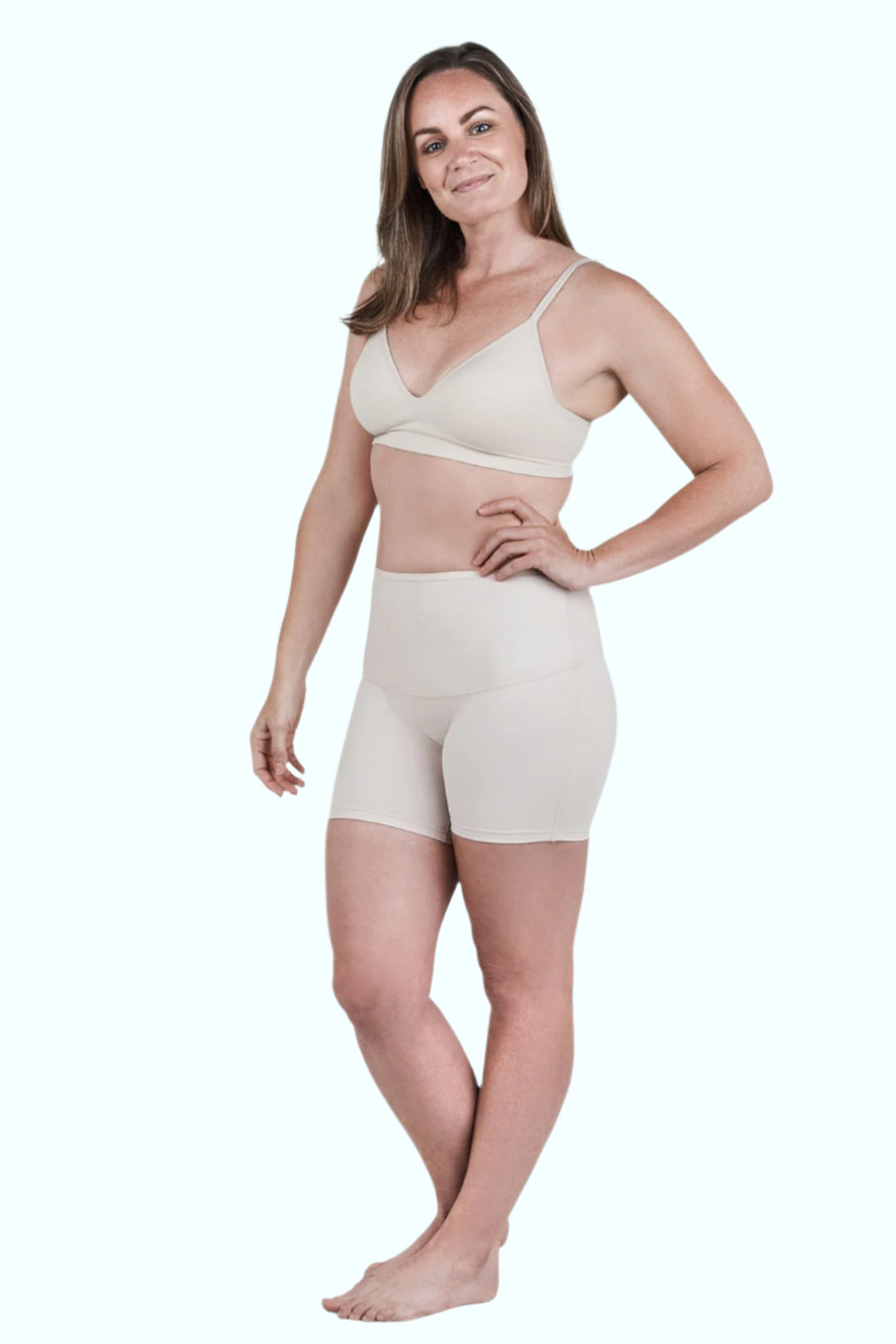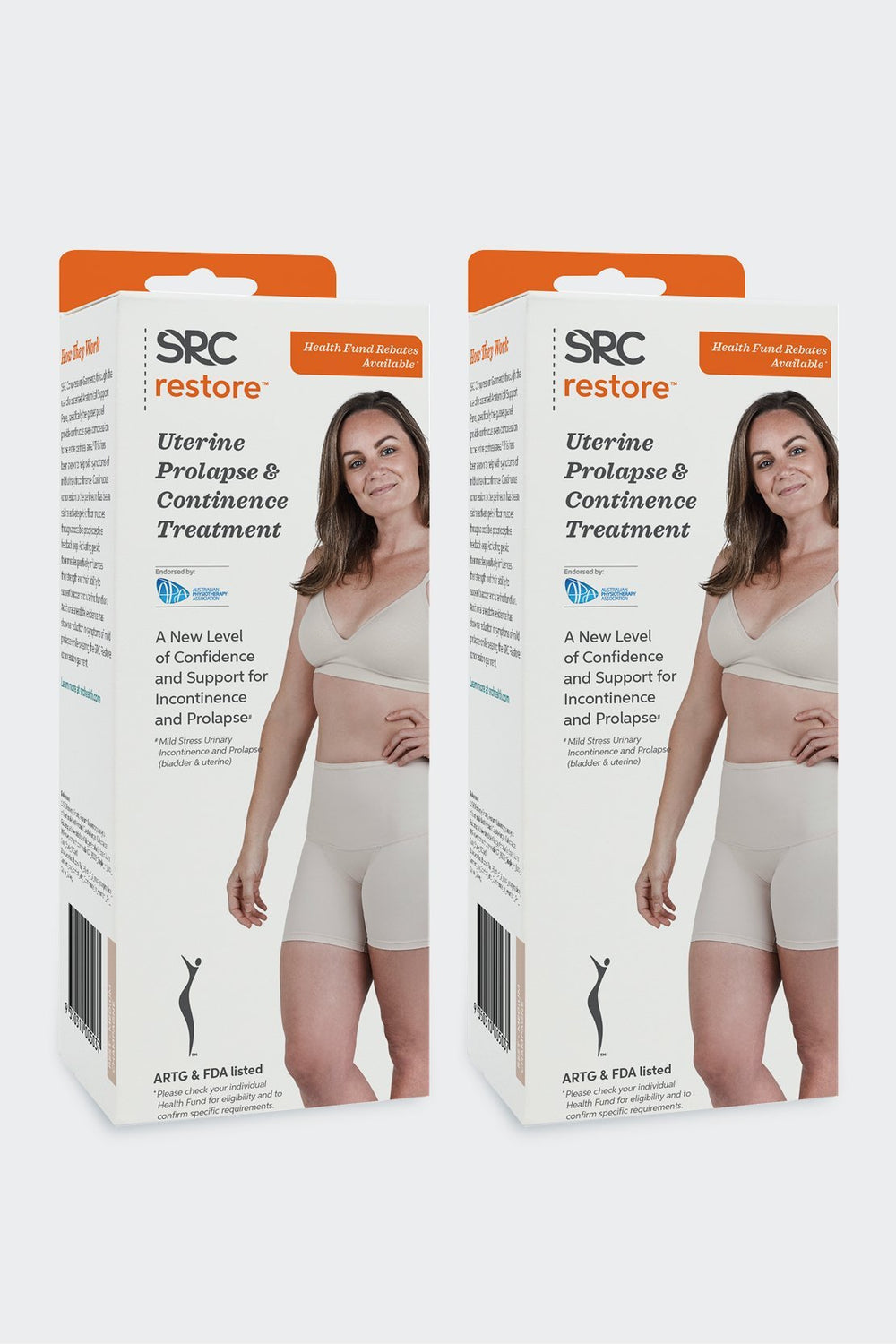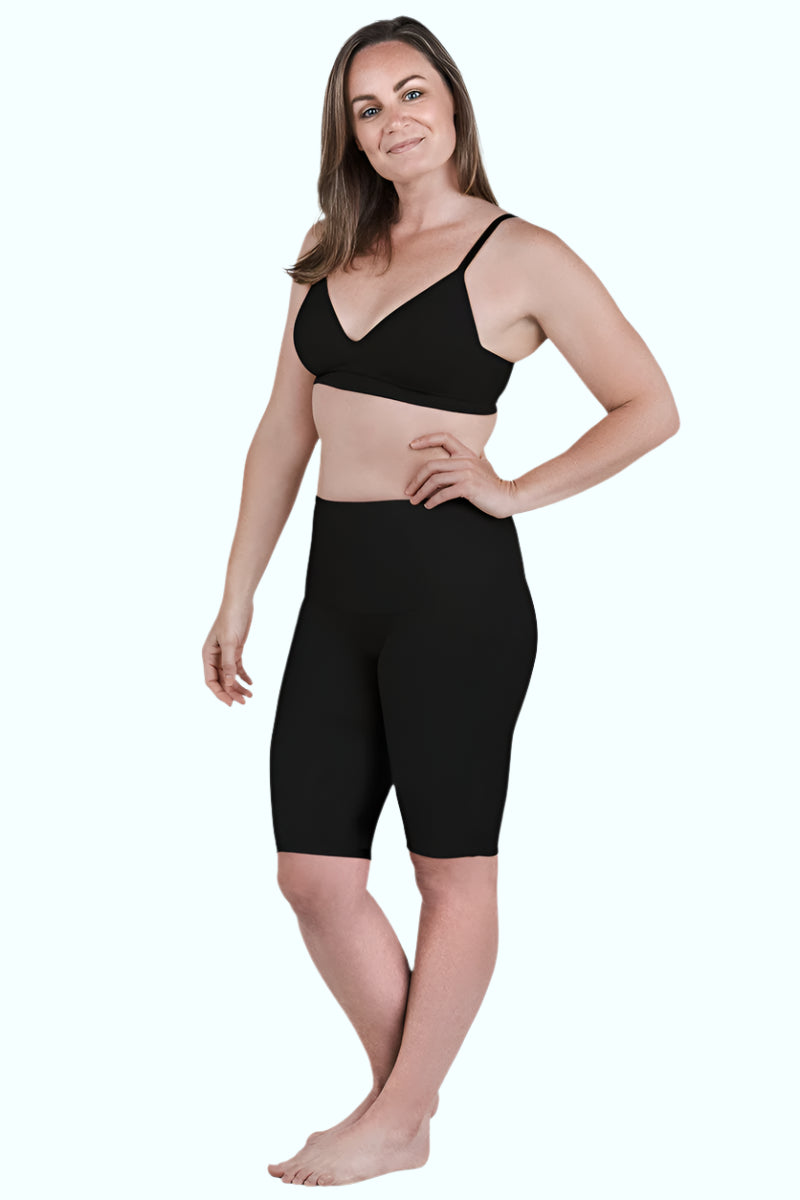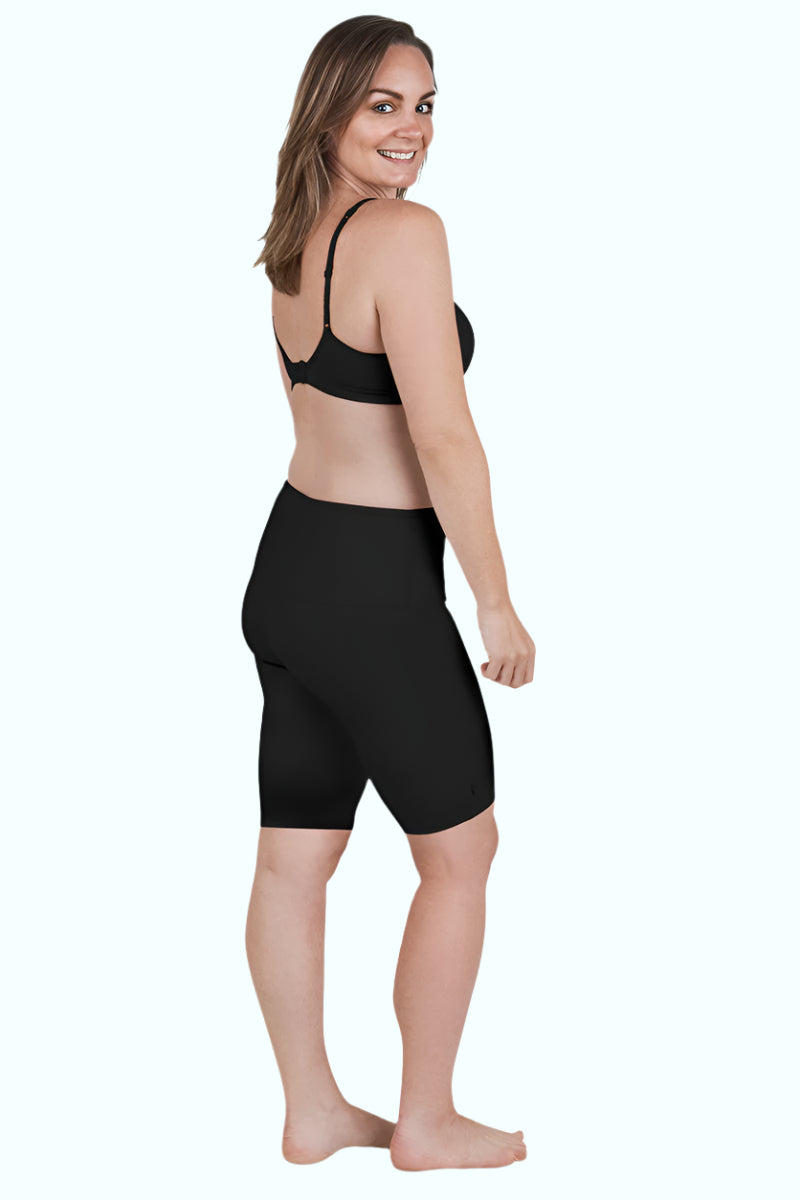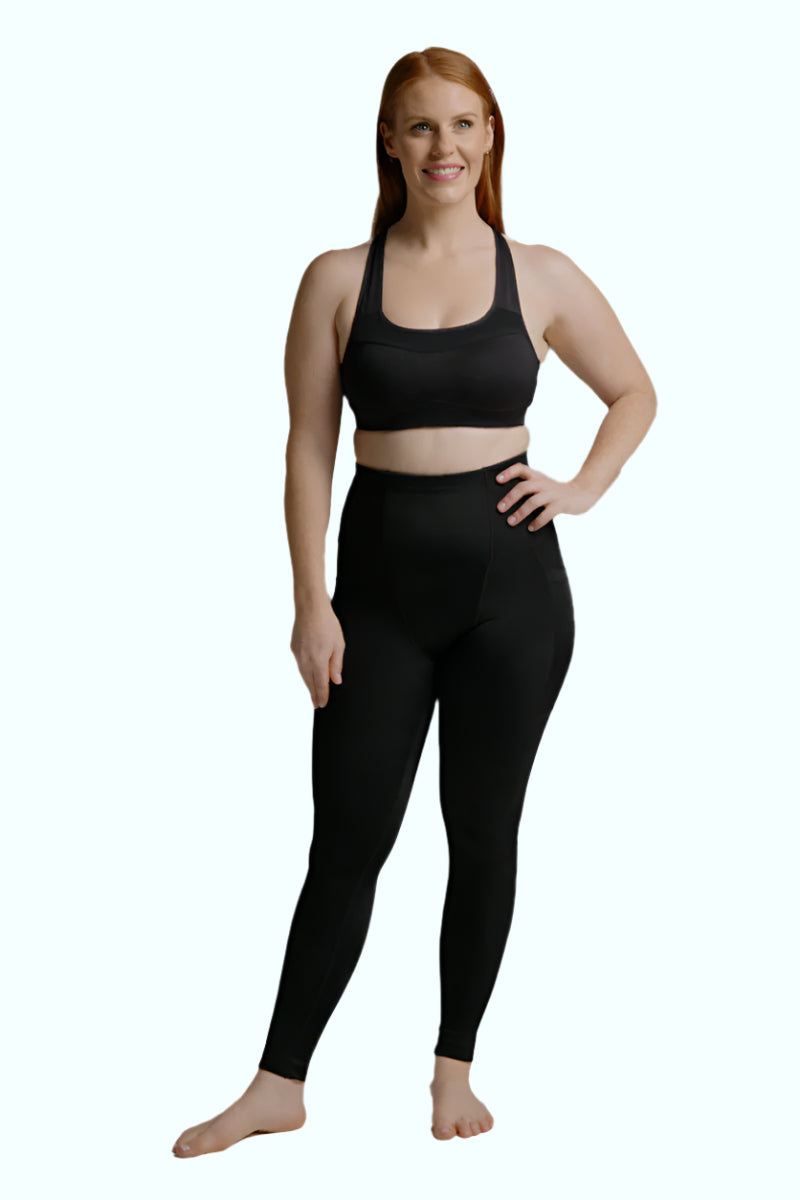As you get closer to your due date, it’s important to start preparing what to wear while giving birth. The right labour clothes can make a significant difference to your experience, providing the comfort you need to stay relaxed and calm.
Pack your hospital bag in advance with these wardrobe essentials and get ready when the big moment arrives. Having everything ready at least three weeks before your due date allows you to focus on welcoming your baby into the world.
Recommended Clothing Options for Labour
Hospitals usually provide gowns that you’ll be wearing during labour. However, bringing your own clothing can provide a sense of familiarity that can help you feel more comfortable. It’s also a small way of bringing a bit of home with you as you go through the whole labour journey.
1. Maternity Leggings or Shorts
During early labour, you can wear pregnancy leggings or shorts to provide support and comfort, alleviating the strain and pressure on your body. Pregnancy leggings have two designs you can choose from that suit your style and comfort. Over-the-bump maternity leggings provide a snug fit that covers the belly. They are also ideal for managing lower back discomfort without applying pressure to the bump. Under-the-bump leggings, on the other hand, have a lower-rise design suitable for mums who are sensitive to friction and heat during warmer weather. Both options are made from stretchy, anti-chafing fabrics that provide support without constricting your movement.
These maternity leggings are also easy to slip on and off, making them a practical choice. As labour progresses, you need to change into a hospital gown or other attire.

2. Personal Labour Gown
If you want to put your own spin on the hospital gown, you can get a personal one that fits your preferences. Look for one with front or back openings and adjustable ties for easy access during medical examinations and procedures. The key is choosing a gown that keeps you comfortable and unrestricted as you navigate through labour.
3. Oversized or Loose Shirt
Simple, comfortable, and probably already in your closet, your favourite oversized shirt made from soft, breathable fabric can be a simple yet an excellent choice if you’re thinking of what to wear during labour. Choose loose clothing with plenty of room in the belly that hangs just low enough to cover your hips and thighs.
4. Lightweight Robe
Unlike many regular skirts, maternity skirts have a soft, elastic waistband that sits comfortably over or under the bump, providing support without feeling restrictive. Pair it with a comfortable, loose top so you can stay cool and move freely during labour.

What to Consider When Choosing an Outfit During Labour
While comfort is paramount, there are other factors to consider in ensuring your labour clothes make your journey smooth and comfortable.
1. Durability
Double-check your clothes’ care tag and make sure what you wear when giving birth can withstand the challenging process of labour and delivery. Avoid delicate fabrics that might be ruined by stains or wear.
2. Breathability
Labour can be physically demanding, so it's crucial to choose breathable fabrics that help regulate your body temperature. Choose fabrics that can keep you cool, dry, and comfortable.
3. Accessibility
Consider clothing that allows easy access to medical checks and procedures during labour. This may include garments with front and back openings or easy-to-remove ties.
4. Ease of Wear
Look for clothes that are easy to remove and wear. This includes garments with minimal fastenings or wrap dresses, making it easier to adapt as needed as your labour progresses.
5. Practicality
If you’re planning to stay in a hospital or birthing centre, ensure that your outfit doesn’t interfere with medical procedures or equipment. It will help make the experience smoother for both you and your healthcare team.

What Clothes Should You Avoid During Labour?
Choosing what to wear during labour is essential, but it’s equally important to know what to avoid. Here are some clothing items that may be impractical or uncomfortable during labour:
1. Tight Clothing
Anything too tight can restrict your movement and cause discomfort during labour. Avoid regular leggings, jeans, or any fitted clothes that might make you feel confined.
2. Clothes With Complicated Fastenings
Button-down shirts and undergarments like cross-strapped bras can be frustrating to remove during labour, and the last thing you want to do is struggle with complicated straps while trying to stay comfortable. Go for clothing items that are easy to take off or adjust.
3. Delicate or Fragile Fabrics
Avoid wearing anything that can be easily damaged, like silk, lace, or other delicate materials. These fabrics are not only difficult to clean but also prone to tearing. Opt for more durable, easy-to-wash materials that can withstand labour without causing you any added discomfort.
4. Clothes With Underwires or Metals
Avoid clothing items or undergarments with metal components that can dig into your skin and cause discomfort during labour.
Recommended Accessories to Make Labour More Comfortable
1. Compression or Non-Slip Socks
Comfortable, non-slip socks will keep your feet warm and provide stability when standing up or walking around during early labour. Compression socks can help improve circulation, keeping you comfortable as your body works through labour. Do not wear them while wearing pregnancy leggings to prevent too much compression.
2. Hair Bands or Clips
Hair bands or clips are easy and simple to pack yet are a real lifesaver, especially during active labour when you don’t want to be distracted by stray strands of hair. Tying your hair in a bun or ponytail can make you feel comfortable and help you stay more relaxed.
3. Heat Packs
Heat therapy is shown to effectively help with pain during labour as it improves blood flow and brings in fresh supplies of oxygen and nutrients.1 Using heat packs can provide relief for common labour concerns like back or pelvis pain and muscle cramps.2 However, you should avoid placing heat packs directly on your abdomen. Speak to your doctor before using heat therapy to ensure it’s safe for your specific situation.
What to Wear After Giving Birth?
Your body continues to undergo significant changes after birth, and selecting the right clothing can support your recovery and comfort. Here are some items to consider for your postpartum wardrobe.

1. Recovery Garments
Recovery shorts or leggings provide compression and pain relief after a C-section or vaginal delivery. Unlike regular belly bands, recovery garments are specially designed using smooth, breathable, anti-chafing fabrics to provide the support you need while allowing you to move freely.
2. C-Section Recovery Shorts
If you’ve had a C-section, C-section recovery shorts can provide postpartum support and alleviate discomfort after delivery. These shorts have an extra soft band and anti-chafing fabric to maximise comfort without irritating the incision area. The gentle compression makes it easier to move around and care for your baby.
For more detailed recommendations on clothing suitable after a C-section, check out What to Wear After a C-Section.
3. Dressing Gown
A loose-fitting outer garment like a dressing gown adds warmth and cover without putting any pressure on your body. It’s perfect for those early postpartum recovery days when you want something cosy to wrap around yourself while resting or caring for your little one.
4. Maternity Bra
If you’re planning on breastfeeding, switch out your regular bras for maternity or nursing bras, which are specially designed to offer easy access for breastfeeding while providing the necessary support to your breasts. Breastfeeding may cause your breasts to change in size, so a nursing bra without underwires or with flexible low-gauge wire support is recommended.3
Choosing the Right Wear for Labour
When it comes to choosing what to pack in your hospital bag and what to wear during labour, the most important thing to consider is your comfort. Don’t stress about finding the perfect outfit and focus on what will make you feel most at ease and supported. Whether it’s an oversized shirt, a comfortable pair of shorts, or a cosy robe, the right clothing can help you stay calm and focused during one of the most challenging yet rewarding moments of your life. Remember, labour is about you and your baby—choose what makes you feel comfortable.
As a trusted companion for mums, SRC Health designs compression garments endorsed by the Australian Physiotherapy Association. Whether you’re choosing what to wear when pregnant or looking for what to wear after birth, our specialised garments can support you in every stage of your pregnancy journey.
FAQs
1. Do you wear a bra during labour and delivery?
Wearing a bra during labour and delivery is a personal choice. Some women prefer to wear a comfortable, non-restrictive bra, such as a sports bra or a nursing bra. Others choose to go without one to feel freer and more comfortable. If you opt to wear a bra, make sure it’s non-restrictive and doesn’t have underwires that can dig into your skin.
2. What do you wear while giving birth?
Many women start their labour in their own clothes, like an oversized shirt or maternity leggings, and then switch to a hospital gown provided by the hospital or birthing centre. You can also bring your own gown if the hospital’s policy allows you to. The key is to choose loose, comfortable, and easy-to-remove clothing.
3. What do babies wear right after birth?
Right after birth, newborns are usually wrapped in a warm blanket before you can hold them against your skin for skin-to-skin contact. It’s best to bring a few soft, breathable outfits and a knitted hat to dress your little one with when you go home from the hospital.
4. What not to pack for labour?
Avoid packing items that aren’t practical or necessary for labour, such as jewellery, heavy perfumes, and tight or restrictive clothing.
5. What should you not do while giving birth?
- People with high-risk pregnancies or those who may require general anaesthesia should avoid eating solid foods during labour.4 Consult your doctor before consuming anything, especially during the later stages of labour.
- Don’t push until your medical team or midwife tells you to do so. Pushing too soon without your cervix fully open may cause your cervix to swell.5
- Don’t ignore your body’s signals. If you feel like something isn’t right or if you’re experiencing unusual pain, discomfort, or symptoms, inform your medical team immediately.


